My family moved into our current home last year and knew that come summer, the deck would need some attention. The whole surface was in rough shape. The latex deck coating had flaked off in large areas and in the places where the finish was still present, it was not well-adhered to the surface. This project was going to require more than a quick clean and re-coat, so I decided to find out which deck stripper would do the best job.
After surviving my first New England winter, I really did not want to spend the entire New England summer sanding down the deck. Summer in New Hampshire lasts for approximately one week and I was ready to hit the beach. An internet search revealed several deck stain and finish removers available to non-professionals. Perhaps this would be the key to an easy deck refinishing.
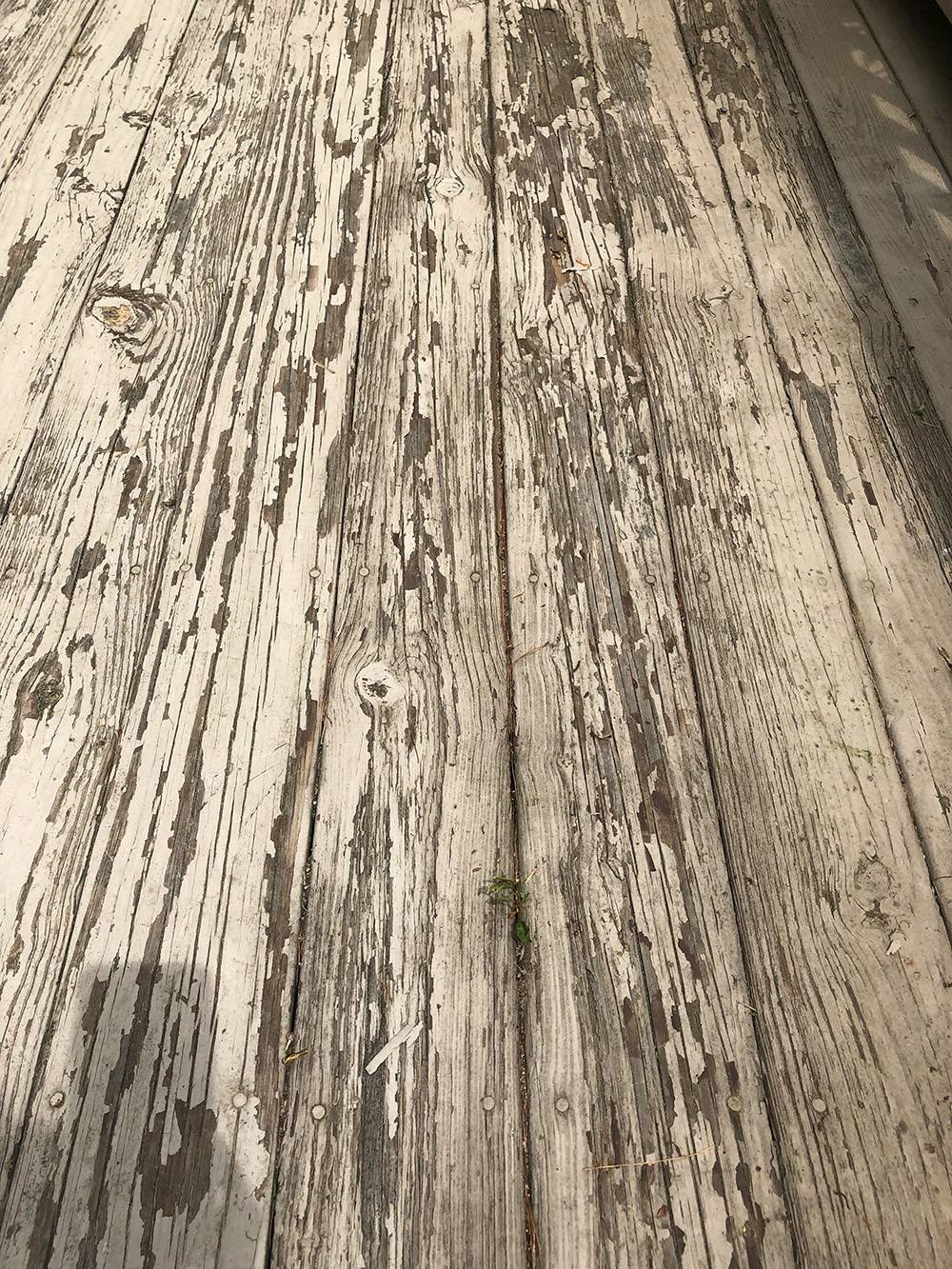
Deck stain stripper categories
The deck stain strippers fall into two different categories depending upon the mechanism by which they work. One category is caustic deck strippers. These contain corrosive chemicals that break down the finish such as sodium hydroxide, (the chemical name of lye) or sodium chloride.
The second category is solvent deck strippers. A solvent deck stripper dissolves the bond between the wood and the finish. They contain solvents such as 1, 3 dioxolane.
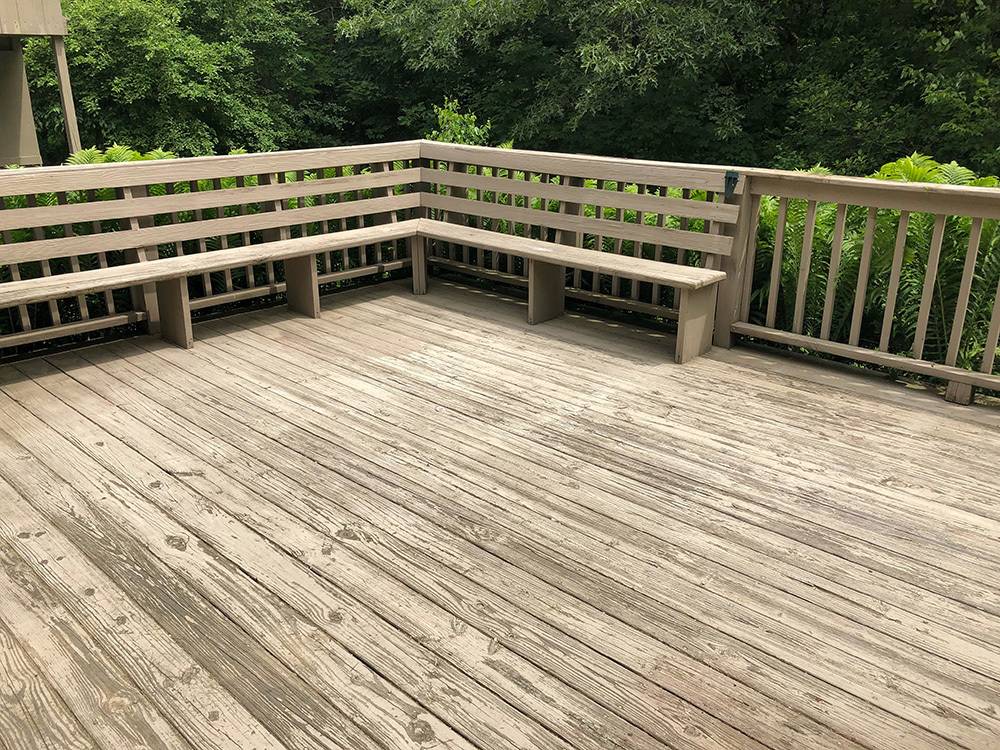
Chemical safety: If you are researching a product and want to know more about the chemicals it contains, this website is helpful. Another option is to do what I did and call Mom. Fair warning: This will probably only work if your mother is a chemist. Luckily, mine is.
After looking up the product’s SDS (Safety Data Sheet), I chose two strippers, one caustic and one solvent, and put them to the test.
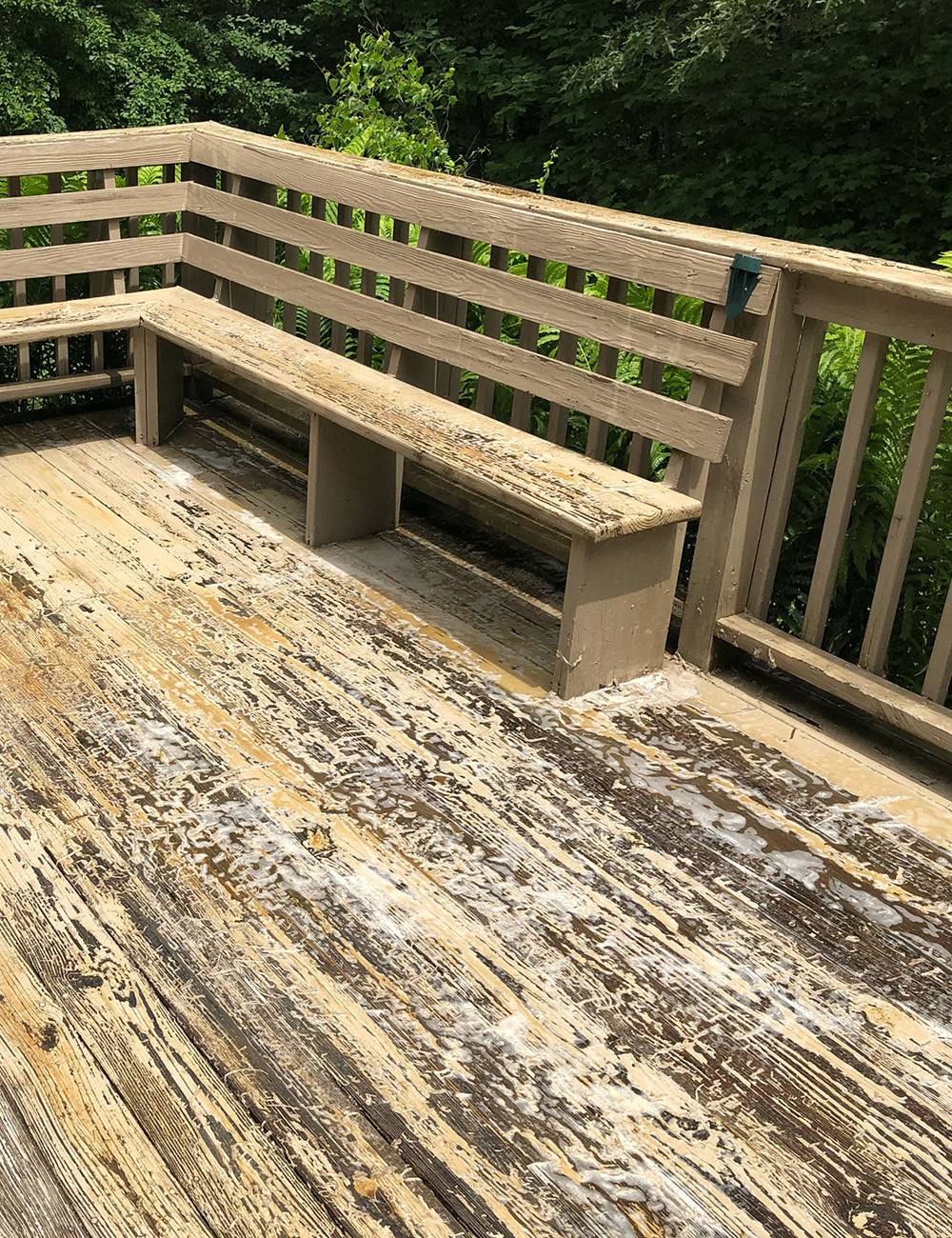
Caustic stripper application
I used Behr Premium Wood Stain and Finish Stripper, a caustic stripper, on half of the deck. It’s suitable for removing exterior latex, oil-based, and 100% acrylic coatings on wood decks. The instructions call for application with a synthetic roller. The stripper was cloudy and had the consistency of jello that was only half-way set.
The label is quite clear about using safety glasses or goggles, gloves, and other precautions against direct contact. If reading the warnings does not convince you of its potency, the smell will. One whiff is all it takes to realize how strong this stuff is.
Wear protective clothing, goggles, acid resistant gloves, and NIOSH approved Respirator
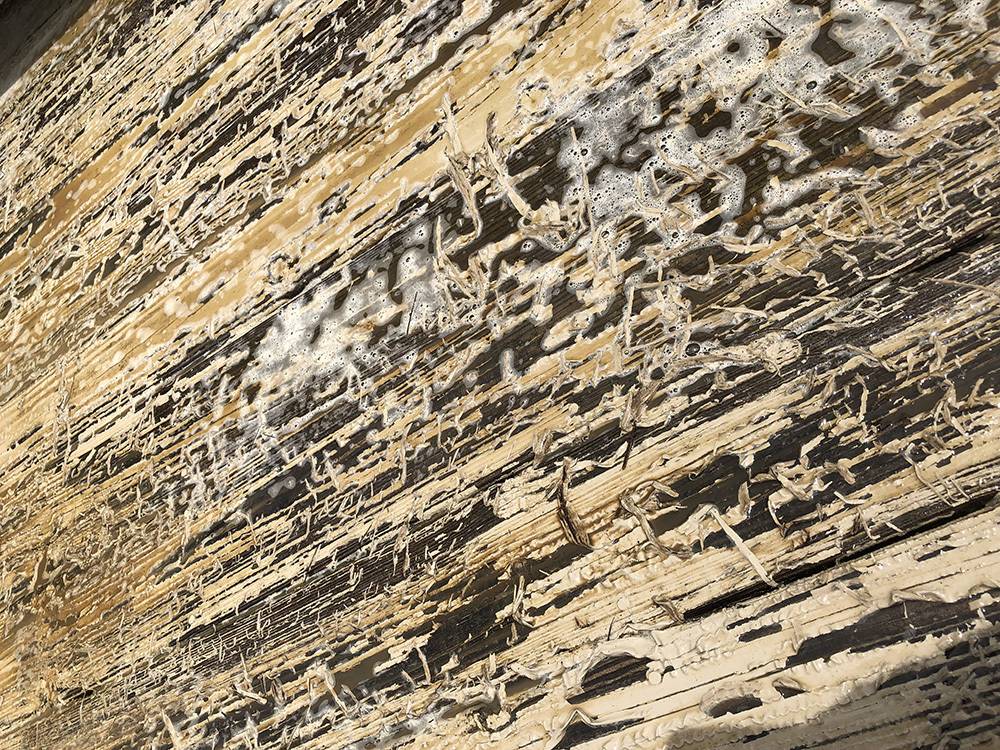
I applied the stripper (full strength) and kept close watch for the next 45 minutes. When areas would start to dry, per the directions, I applied a light misting of water. I let the stripper sit for the maximum amount of time suggested then scrubbed with a stiff brush and used a garden sprayer to rinse.
Behr does not recommend using a power washer. Much of the finish lifted, but much did not. I then applied a wood and deck cleaner. I used the recommended Behr All-in-One Wood Cleaner to neutralize the chemical reaction and brighten the wood. It also removes any stains from mold or mildew.
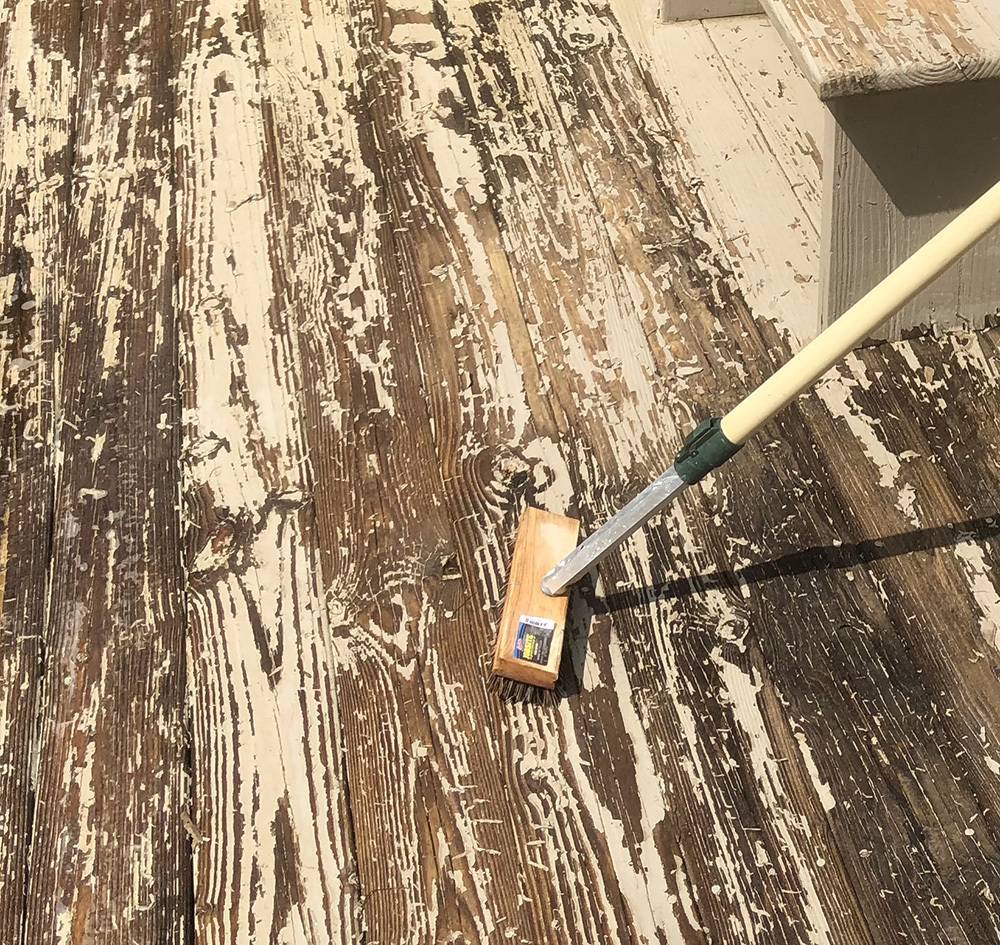
Solvent stripper application
Next, I used JoMax Stain and Finish Deck Stripper, a solvent stripper, on the remaining portion of the deck. This product was clear and thinner.
It also has a strong odor and plenty of warnings about taking safety precautions. I followed the suggested timetables and reapplied the stripper to areas that started to dry. Per the directions, I used the stiff-bristled brush on the surface before rinsing. The label says that either a garden hose or a pressure washer on a low setting can be used.
This product showed much less efficacy. As I was rinsing with the power washer, I could tell that some of the finish had dissolved, but there was no noticeable change. It was thinner in areas but still very much present.
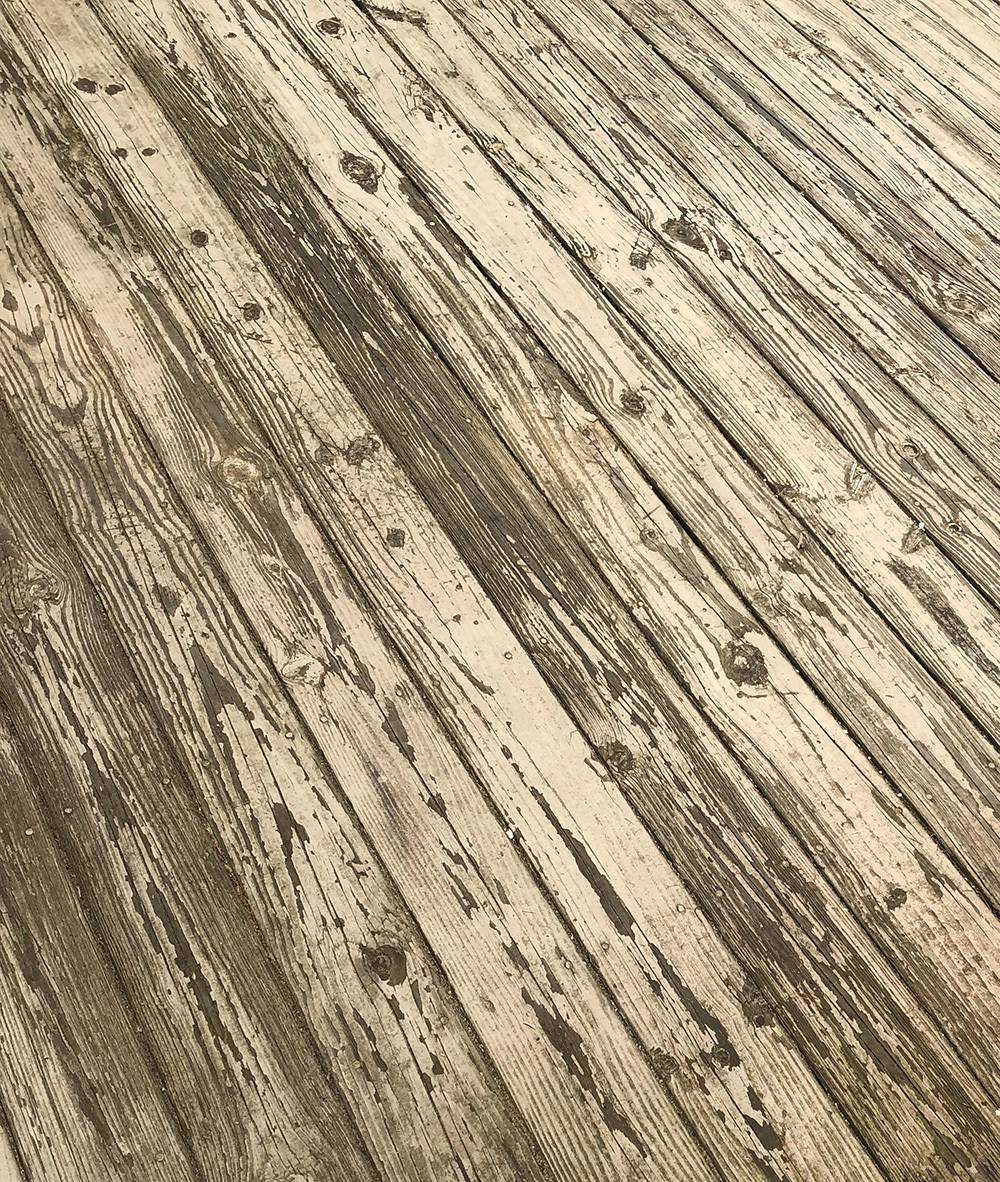
Which Deck Stripper Was Best?
As it turns out, neither stripper proved to be a magical solution and there was a fair amount of sanding needed after all. After sanding, I applied Ben Moore’s Arborcoat semi-solid stain in a custom color to match the house.

This was not an easy test case. I certainly challenged the chemical strippers, as the existing latex deck finish was heavy-duty and very thick. It seems that a thinner finish would lift more fully.
Of the two, the Behr caustic stripper worked much better though it did not provide overwhelming results and took a fair amount of elbow-grease in both the application process and the physical removal by scrubbing. Also, it required an additional neutralizing step.
Whichever deck stain remover you go with, I would recommend protecting any adjacent areas or adjacent surfaces— exterior wood surfaces, unpainted or painted metal surfaces, and nearby shrubs or foliage — that could be damaged by the stripper. You can use plastic sheets or drop cloths to protect your things. You also need to ensure that the run off or residue from rinsing the deck does not go into any nearby storm drains.
In the end, the deck is now restored and protected for another year. It was in rough shape to start with so no one is going to think it’s brand new, but it has served us well this summer and will live to fight another day come winter.

You can use paint stripper to clean up old hardware, or just boil it (yes – we’re serious)!

